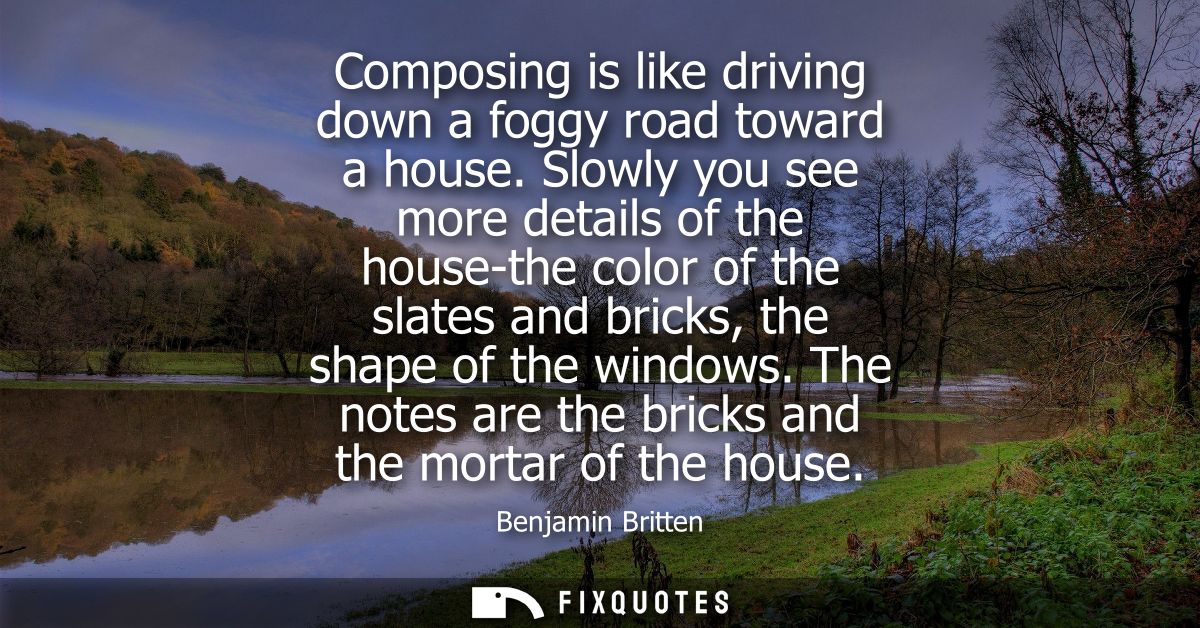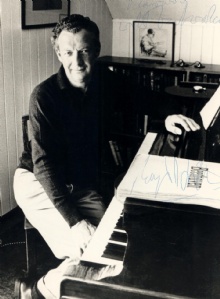"Composing is like driving down a foggy road toward a house. Slowly you see more details of the house-the color of the slates and bricks, the shape of the windows. The notes are the bricks and the mortar of the house"
About this Quote
Composing music unfolds much like navigating an uncertain, obscured path, filled with discovery and gradual revelation. The act of moving forward, not always seeing the destination clearly, reflects the creative process in which a composer starts with only a vague notion, a shadow in the distance, and proceeds step by step, guided more by intuition and feeling than by a fully formed plan. Each tiny forward motion along this foggy road brings more clarity, just as writing or composing uncovers new details, possibilities, and layers that were impossible to grasp at the outset.
Music, like architecture, is built from elemental components. As one films the fog begins to part, windows and bricks become visible, followed by subtler features: patterns, colors, and ornaments. In the composer’s metaphor, the notes serve as the building blocks of a musical house. Individual notes are much like individual bricks or tiles, on their own, nondescript and plain. But their arrangement, their relationship to each other, and the order in which they are placed transforms them from simple stones into a meaningful, coherent structure. The mortar, which binds the bricks, can be likened to the harmonies, rhythms, and textures that connect notes into phrases, movements, and entire works.
The metaphor also portrays composing as an act of discovery as much as one of invention. Instead of starting with a blueprint, the composer uncovers the work piece by piece, guided by sensory cues and intuition. There’s a suggestion of humility in the creative process: the piece isn’t summoned into being fully formed from the composer’s mind, but rather emerges through attentive, persistent observation and trial and error. This process requires patience and trust, accepting uncertainty while staying attentive to the unfolding details. Each new section or piece of music is a unique house, revealing its own character and surprises as one draws nearer, making each composition both a journey and an arrival.
About the Author

